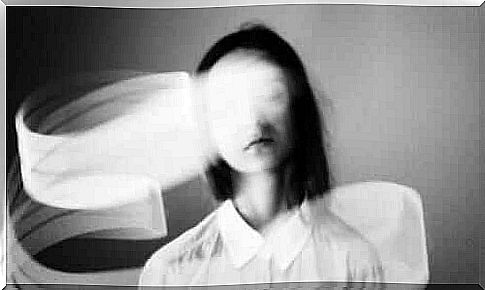Sensory Deprivation And The Frightening Effects

The first studies on sensory deprivation date back to the 1950s. However, it is possible that there were secret studies even before that decade. Researchers from McGill University in Montreal, Canada, were the first to conduct related experiments with volunteers.
In its most basic form, sensory deprivation is the partial or total restriction of stimuli applied to one or more senses. It means blocking sight, hearing, touch or everything at the same time. People have used this type of practice for therapeutic or research purposes, as well as for torture.
Unfortunately, people became interested in sensory deprivation because of this recent use. After World War II, there were reports of prisoners confessing without being beaten. It was enough torture for the prisoners to be deprived of the senses of environmental stimuli to create major changes in their willpower.
Conditions of the experiments by sensory deprivation
In principle, the experiments used only three types of experimental conditions regarding sensory deprivation. In any case, this is the case for the studies we know about.
The first is Bexton, Heton and Scott’s study dating back to 1954. Second, we have Wexler, Mendelson, Liederman and Salomon’s study from 1958. The third is Shurley’s study from 1960.
- First situation. Sensory deprivation is not absolute. The volunteer lies down on a bed inside an isolated but lighted room. They have dark glasses, gloves and cardboard capsules on their hands. They stay there for two to six days.
- Second situation. The volunteer lies on a mattress inside a capsule that restricts their movements. This capsule is a room with bare walls and minimal light. They remain in this situation for 36 hours.
- Third situation. The researchers lower the volunteer who is naked into a water tank. They are wearing a mask that allows them to breathe, but they cannot see or hear anything. They do not touch the bottom of the tank. The volunteer remains in this situation as long as they can handle it.
Sensory deprivation and perception processes
The experiments carried out by the researchers evaluated first and foremost whether these conditions changed perceptual processes. They concluded that they did. The deprived experience meant, above all, severe visual disturbances. The volunteer saw static objects as if they were moving, and as if they were changing shape or size.
They saw things like the walls moving and tables going. They also had a greater level of visual sensitivity. After several days, they perceive stimuli more slowly. The subject saw S as a straight line. They also experienced other hallucinations.
At the same time, there was also a general disorientation when it came to touch and perception of space and time. In one of the experiments, researchers showed how the effects of social isolation are similar to sensory deprivation.
Cognitive effects
Many of the volunteers indicated that they wanted to use the participation in the experiment to think about personal problems they had not had time for. At first they were able to do that, but as the hours went by, it became more and more difficult to concentrate on the thoughts. After a certain time, they were not able to count to 30.
The researchers found that the subjects’ ability to remember and retain information improved after the experiments. At the same time, however, the capacity for abstraction, generalization and implementation of mathematical reasoning was reduced.
Surprisingly, the ability to learn improves in people who go through sensory deprivation compared to those who do not. However, motor skills are markedly eroded, especially after being deprived of stimuli for 48 hours or more.

Some interesting conclusions about sensory deprivation
Simply put, all the experiments showed that it is possible to induce conditions of pseudopsychosis through sensory deprivation. It is in case of temporary psychosis. We add the prefix “pseudo” because when the experiment is over and the participant returns to their normal life, they also get all their normal abilities back.
One of the most interesting results was that so-called “normal” people experienced hallucinations during sensory deprivation. However, those diagnosed with schizophrenia said that the hallucinations tended to disappear.
Similarly, the researchers found that the personality of each individual plays a role in how they will experience sensory deprivation. All the volunteers tried to adapt to the conditions, but a good number of them tended to focus on the past and go into depression. Almost everyone became more open to suggestions. This causes the effects of psychological torture in this condition to become all the more profound. The same goes for those who go into psychological therapy.









